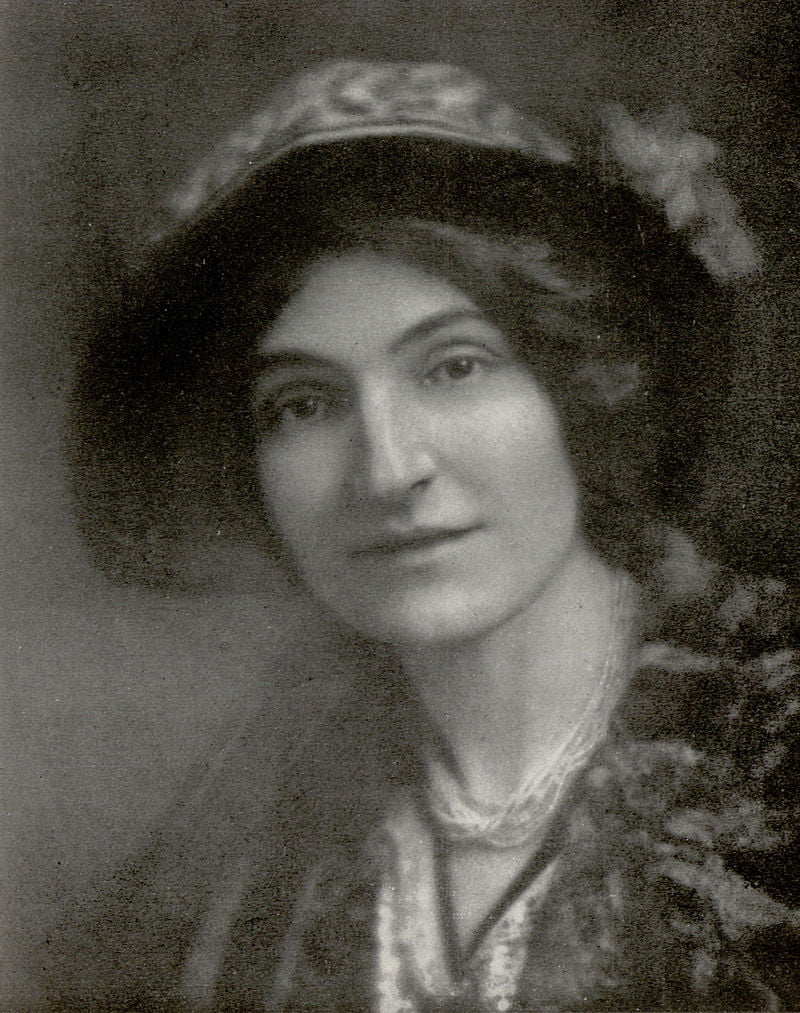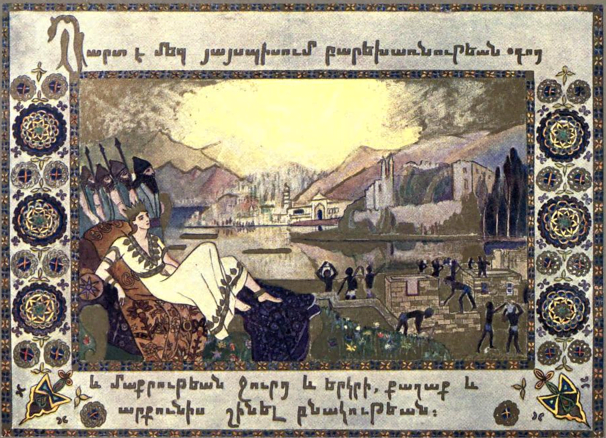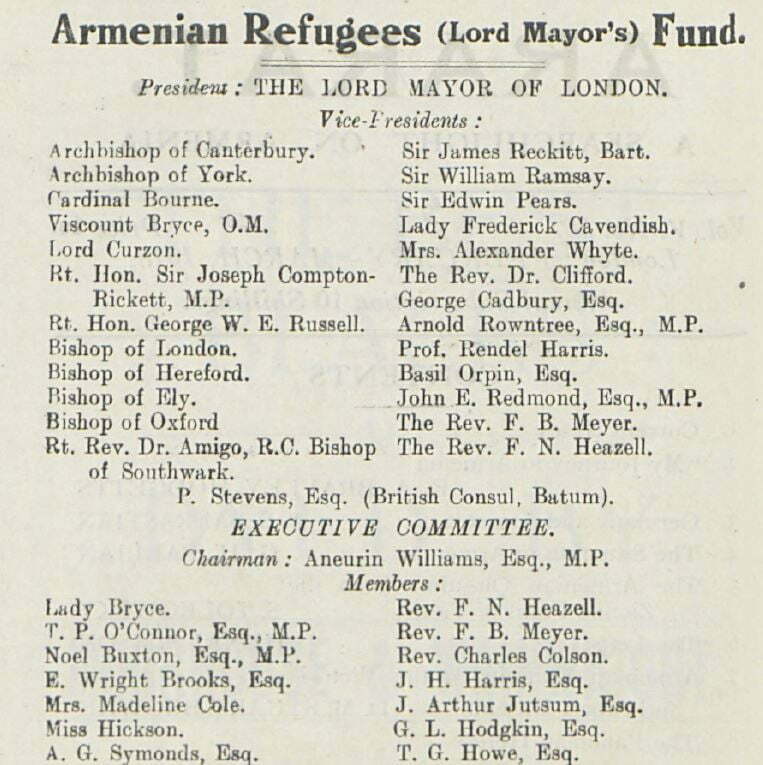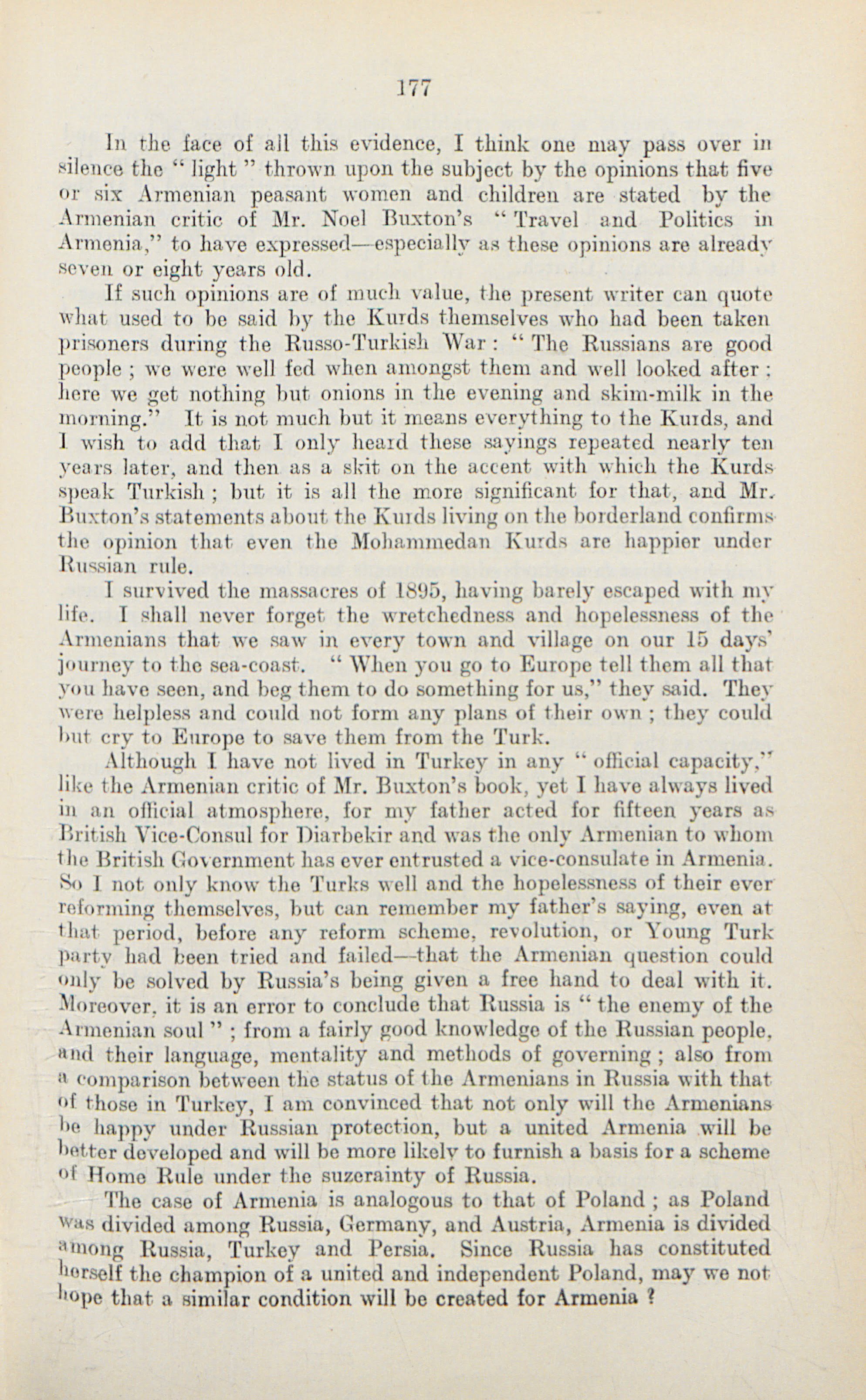Zabelle Boyajian
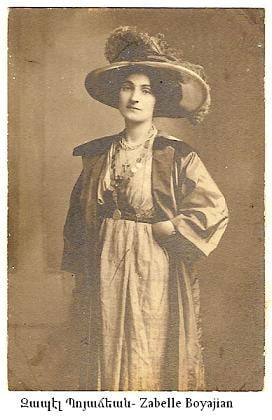 Zabelle Boyajian was a prominent Armenian painter, writer and translator. She was born in 1873 in Diyarbakir, in the days of the Ottoman Empire. Her father was the British Vice-Consul Baron Thomas Boyajian. Her mother Catherine Rogers was a descendant of the English poet Samuel Rogers. The murder of her father during the Hamidian massacres was a life-changing event. Boyajian moved to London with her brother and mother, where she spent most of her life. She studied at the Slade School of Fine Art, where she started writing and illustrating her own books. She became an active member of the Armenian community and significant driving force behind cultural life and fundraising during WW1. She was very close to the family of Raffi, the famous Armenian novelist: she had a close lifelong friendship with Anna, Raffi’s wife, and worked closely with his son Aram in the Armenian Association of London. She promoted Raffi’s work through reading events and translating and publishing his novels. She also contributed to Aram Raffi’s Land of Armenia, by translating Armenian hymns into English. Her most significant work is the beautifully illustrated anthology Armenian Legends and Poems, with an introduction by Viscount James Bryce and a concluding essay by Aram Raffi on the history of Armenian literature. Scholars have selected this work as culturally significant and a part of the knowledge base of civilisation. It is a collection of translations of Armenian literature from the middle ages, passages from the Movses of Khorene, a fifth-century Armenian historian, and poetry from the nineteenth century. Boyajian created the illustrations and was the anthologist and translator for many of the poems in this volume. All the proceeds of the book went to the Lord Mayor’s Fund in order to help the Armenian refugees.
Zabelle Boyajian was a prominent Armenian painter, writer and translator. She was born in 1873 in Diyarbakir, in the days of the Ottoman Empire. Her father was the British Vice-Consul Baron Thomas Boyajian. Her mother Catherine Rogers was a descendant of the English poet Samuel Rogers. The murder of her father during the Hamidian massacres was a life-changing event. Boyajian moved to London with her brother and mother, where she spent most of her life. She studied at the Slade School of Fine Art, where she started writing and illustrating her own books. She became an active member of the Armenian community and significant driving force behind cultural life and fundraising during WW1. She was very close to the family of Raffi, the famous Armenian novelist: she had a close lifelong friendship with Anna, Raffi’s wife, and worked closely with his son Aram in the Armenian Association of London. She promoted Raffi’s work through reading events and translating and publishing his novels. She also contributed to Aram Raffi’s Land of Armenia, by translating Armenian hymns into English. Her most significant work is the beautifully illustrated anthology Armenian Legends and Poems, with an introduction by Viscount James Bryce and a concluding essay by Aram Raffi on the history of Armenian literature. Scholars have selected this work as culturally significant and a part of the knowledge base of civilisation. It is a collection of translations of Armenian literature from the middle ages, passages from the Movses of Khorene, a fifth-century Armenian historian, and poetry from the nineteenth century. Boyajian created the illustrations and was the anthologist and translator for many of the poems in this volume. All the proceeds of the book went to the Lord Mayor’s Fund in order to help the Armenian refugees.
Lord Bryce said in the introduction: “Severed for many centuries from Western Europe by the flood of Turkish barbarism which descended upon their country in the Middle Ages, and subjected for the last two generations to oppressions and cruelties such as few civilised people have ever had to undergo, the Armenians have been less known to Englishmen and Frenchmen than their remarkable qualities and their romantic history deserve. Few among us have acquired their language, one of the most ancient forms of human speech that possess a literature. Still, fewer have studied their art or read their poetry even in translations. There is, therefore, an ample field for a book which shall present to those Englishmen and Frenchmen, whose interest in Armenia has been awakened by the sufferings to which its love of freedom and its loyalty to its Christian faith have exposed it, some account of Armenian art and Armenian poetical literature. Miss Boyajian, the authoress of this book, is the daughter of an Armenian clergyman, whom I knew and respected during the many years when he was British Vice-Consul at Diarbekir on the Tigris. She is herself a painter, a member of that group of Armenian artists some of whom have, like Aivazovsky and Edgar Chahine, won fame in the world at large, and she is well qualified to describe with knowledge as well as with sympathy the art of her own people”. She also wrote several essays on Shakespeare, Byron, and Euripides, as well as the Armenian writers Raffi, Michael Arlen and Avetik Isahakian. She wrote comparative works on English and Armenian literature and travel diaries and was a regular contributor to the monthly periodical Ararat, A Searchlight on Armenia. She also received recognition as a painter and her paintings were exhibited in London, Germany, Egypt, France, Belgium and Italy in several solo exhibitions. She died on 26 January 1957 in London.

